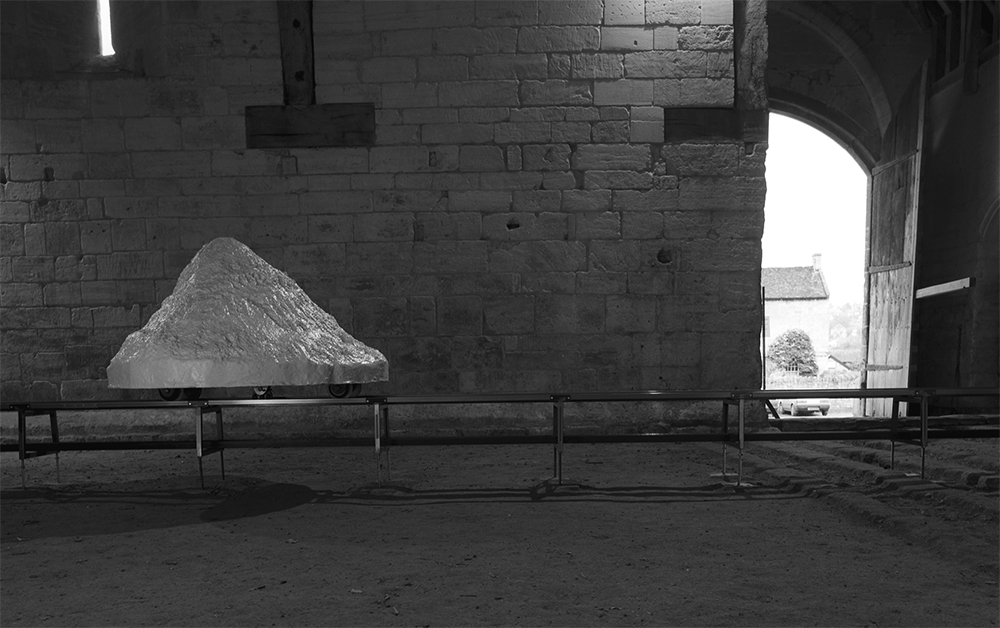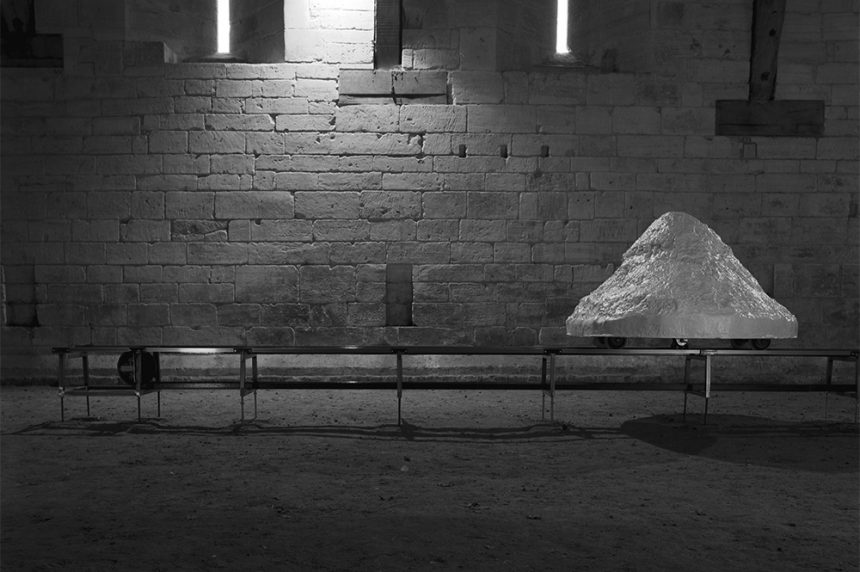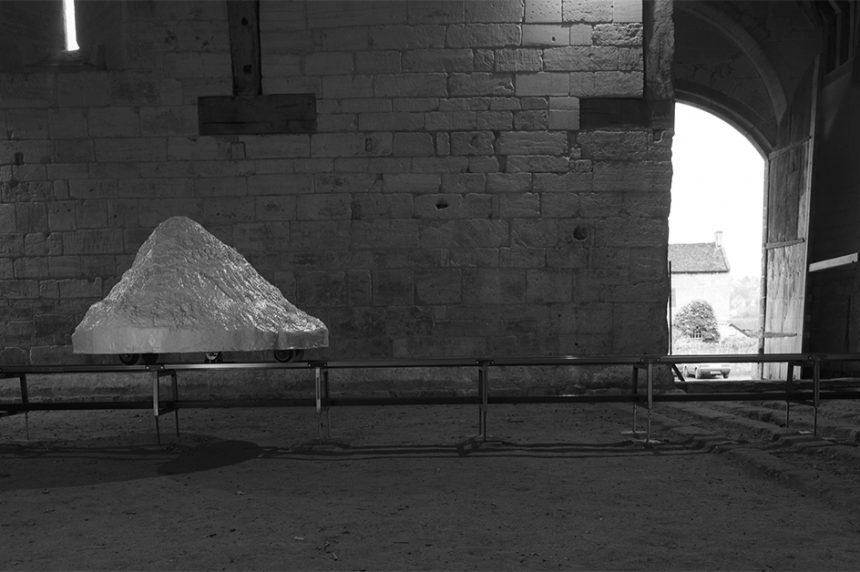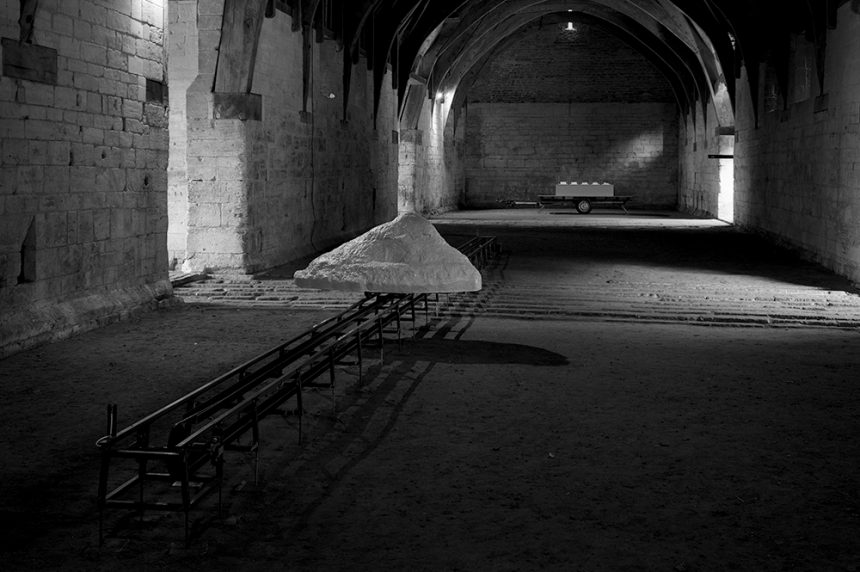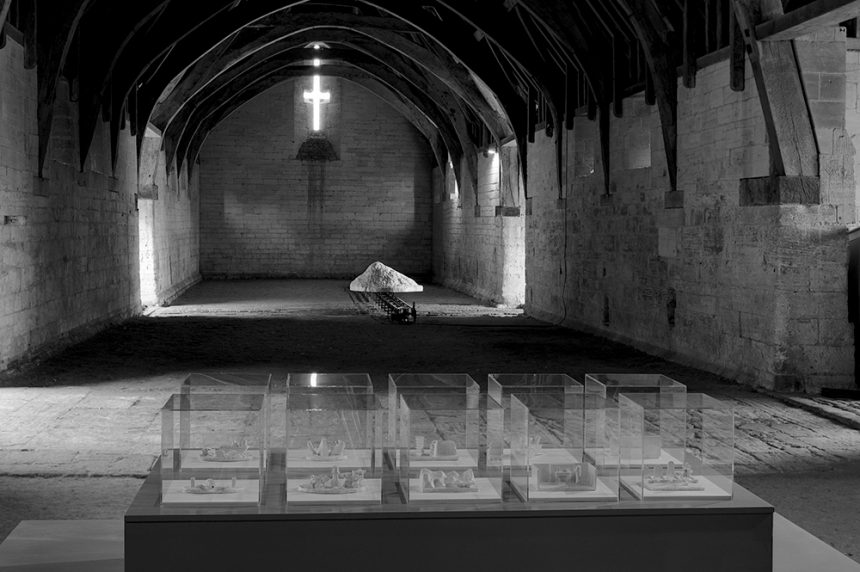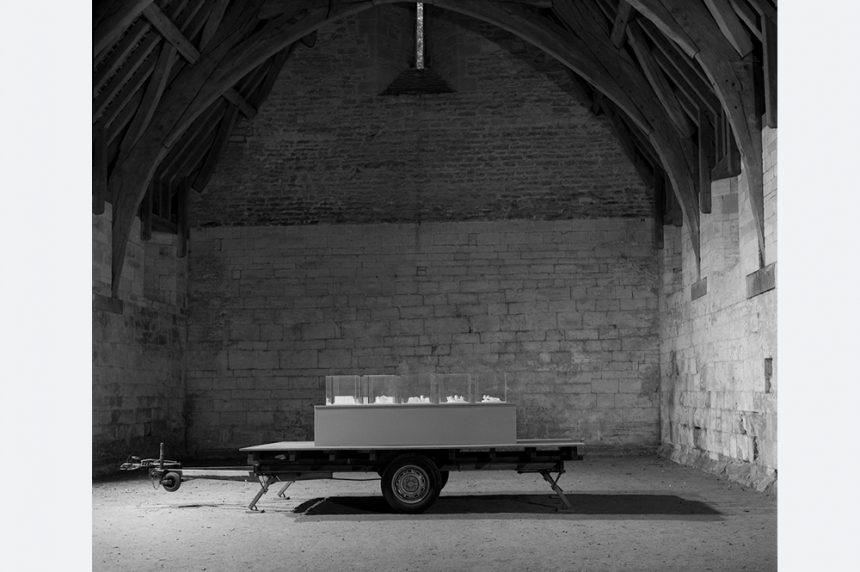TRACK
Track was originally made as a temporary site-based installation for the Saxon Tithe Barn in Bradford-on-Avon in 2000. The work comprised a white form that glided slowly along a 15-metre horizontal track powered by an electric motor. The form took 20 minutes to travel the full length of the track where it would momentarily pause before slowly reversing and repeating its journey.
The important thing about Track that a photograph cannot show, is the slowness of the white form’s progress back and forth along the rails. The slowness is slower than the special halting march made before the cenotaph on Poppy Day. It is slower than Kung Fu walking on a rice paper scroll. It is slower than the shuffling gait of the oldest and most infirm pet dog. It is slower than the plaster original of GF Watt’s ‘Physical Energy’ as it is winched out of the shed at the back of the Watt’s Museum in Compton once a year. It is so slow that it is almost unbearable to watch.
The photograph does give some indication of the physicality of the form on the rails. You may notice that it is somewhat like a model of a mountain or a land mass. In 17th Century Japan, stones were collected for their likeness to mountains. Favourite ‘suiseki’ stones would accompany collectors on trips in specially made travelling cases. These stones were treasured and sometimes had their own attendant and separate transportation. The mountain-like form in ‘Track’ was not a special found object like the suiseki; it was instead the product of a day’s hole-digging.
Unlike the unclaimed luggage currently circumnavigating rubber conveyors at airports around the world, there is no hope that this object will ever arrive. from Ev+a 2002 catalogue
This project was funded by the Arts & Humanities Research Board and Southern Arts (Arts Council of England)


